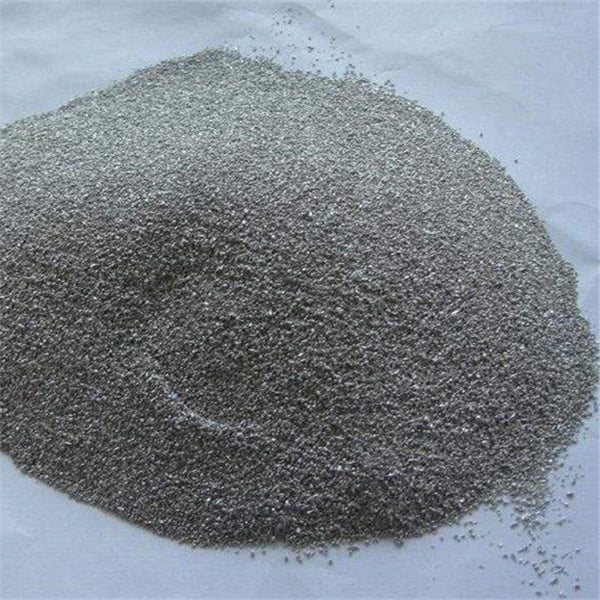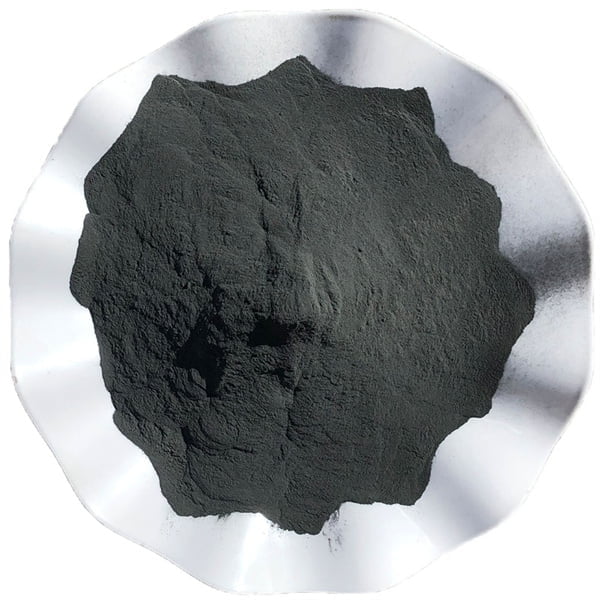Powder laser 3D printing For aerospace Application
Table of Contents
Powder Laser 3D printing, also known as Laser Powder Bed Fusion (LPBF), plays a vital role in the aerospace field, offering several advantages over traditional manufacturing techniques.
1. Lightweight, Complex Components:
1. Aircraft parts manufacturing
Can Powder laser 3D printers be used to make engine components on airplanes?
Absolutely! Powder laser 3D printers are playing an increasingly important role in the manufacturing of airplane engine components. Here’s why:
Advantages:
Complex, lightweight designs: 3D printing allows for intricate designs with internal channels and lattices, impossible with traditional techniques. This can lead to lighter, stronger components, improving fuel efficiency and performance.
High-performance materials: LPBF printers can handle advanced metal alloys like titanium and Inconel, crucial for withstanding the high temperatures and pressures in jet engines.
Reduced waste and lead time: 3D printing often uses less material than traditional subtractive manufacturing, minimizing waste. Additionally, it can streamline production and reduce lead times compared to casting or forging.
Examples:
Rolls-Royce: They use LPBF for complex combustor tiles in their Pearl 10X engine, claiming a 5% efficiency increase.
GE Aviation: They’re building the world’s largest LPBF printer to produce jet engine structural components for single-aisle aircraft.
Honeywell: They’re using 3D printing for fuel nozzles and other engine components, aiming to reduce weight and emissions.
Challenges:
Cost: LPBF printers are currently expensive, though costs are decreasing.
Qualification: Extensive testing and certification are necessary for safety-critical parts like engine components.
Limited build size: Some printers have size limitations, though larger systems are being developed.
LPBF excels in creating intricate, lightweight parts with internal channels and lattices, impossible with conventional methods. This reduces weight without compromising strength, crucial for fuel efficiency and performance. Examples include:
Fuel injectors: Complex internal geometries for optimal fuel mixing and combustion.
Satellite brackets: Lightweight and strong for reduced payload weight.
Heat exchangers: Complex internal channels for efficient heat transfer.
2. examples of aircraft components
Fuel system components: Nozzles, injectors, and heat exchangers can be 3D printed with complex internal channels for improved fuel flow and heat transfer.
Interior components: Brackets, clips, and other non-critical parts can be 3D printed for weight reduction and customization.
Engine components: Some companies are experimenting with 3D printing certain engine components, such as combustors and turbine blades.
Unmanned aerial vehicles (UAVs): Due to their lightweight and complex designs, UAVs are a prime candidate for 3D printed components.

2. Custom Parts and On-demand Manufacturing:
LPBF allows for quick production of customized parts, essential for repairs, prototypes, and low-volume applications. This reduces dependence on large-scale manufacturing and enables faster turnaround times. Examples include:
1. Speed and Customization:
Faster turnaround times: LPBF eliminates traditional tooling, drastically reducing lead times for custom parts. Imagine needing a unique bracket for your aircraft; instead of months of waiting, it can be printed in days.
Unmatched customization: Complex geometries and intricate designs are a breeze for LPBF. Think lightweight panels with internal lattice structures for aircraft, or bespoke fittings for spacecraft experiments – the possibilities are endless.
2. Benefits for Specific Applications:
Aircraft interior components: Imagine customized panels with integrated lighting or brackets perfectly fitting non-standard spaces. This saves weight, reduces assembly time, and enhances aesthetics.
Spacecraft components: LPBF shines for unique, mission-specific parts like antennas, brackets, or even small engine components. Imagine printing a custom heat exchanger for a specific lunar mission, tailored to the environment and mission requirements.
Replacement parts: No more waiting for obsolete or damaged parts! LPBF allows for on-demand printing, minimizing downtime and ensuring smooth operations. Imagine printing a rare gear for a vintage aircraft or a critical sensor housing for a spacecraft in orbit.

3. Advanced Materials and Performance of Powder Laser 3D printing
LPBF, or Laser Powder Bed Fusion, isn’t just about creating custom parts; it unlocks the potential of high-performance materials that were previously difficult or impossible to use in traditional manufacturing. Let’s dive deeper into how LPBF empowers industries like aerospace, rocketry, and turbine technology:
1. Material Marvels:
Titanium alloys: Imagine turbine blades that withstand scorching temperatures and intense pressure. LPBF allows for printing complex cooling channels within these blades using high-strength titanium alloys, maximizing performance and efficiency.
Inconel: This nickel-chromium alloy boasts exceptional heat resistance and strength, making it ideal for rocket engine components. LPBF enables intricate designs like combustion chambers and injectors, optimizing thrust and fuel efficiency.
Aluminum-lithium: This lightweight wonder shaves off precious weight in aerospace structures. LPBF allows for printing complex ribs, trusses, and honeycomb structures, creating strong yet feathery components for aircraft and spacecraft.
2. Beyond the Examples:
Medical implants: Biocompatible titanium alloys printed with LPBF create durable, lightweight implants that perfectly match patient anatomy.
Dental prosthetics: Strong, biocompatible materials like cobalt-chromium are used for LPBF-printed dentures and crowns, offering superior fit and function.
Cutting-edge tools: Imagine surgical instruments or molds with intricate features, printed from wear-resistant materials like tungsten carbide – LPBF makes it possible.
3. Unlocking Performance:
Strength-to-weight ratio: LPBF allows for printing lightweight, complex structures that are incredibly strong, crucial for maximizing performance in aerospace and other weight-sensitive applications.
High-temperature resistance: Materials like Inconel can withstand extreme heat, enabling LPBF to create components for jet engines, rocket engines, and other high-temperature environments.
Fatigue properties: LPBF-printed parts exhibit excellent fatigue resistance, essential for components that undergo repeated stress in applications like turbines and aircraft structures.
| Material | Key Properties | Applications | Advantages | Disadvantages | Cost | Post-Processing | Certification |
|---|---|---|---|---|---|---|---|
| Titanium Alloys | High strength-to-weight ratio, high-temperature resistance, corrosion resistance | Aerospace, medical, automotive | Excellent mechanical properties, biocompatibility, lightweight | High material cost, complex post-processing | High | Heat treatment, machining | Stringent regulations |
| Inconel | High-temperature resistance, strength, corrosion resistance | Aerospace, energy, chemical processing | Excellent performance at high temperatures, resistance to harsh environments | High material cost, complex post-processing | High | Heat treatment, machining | Stringent regulations |
| Aluminum-Lithium | Lightweight, high strength, good stiffness | Aerospace, automotive, defense | Reduced weight, improved fuel efficiency | Lower strength than titanium alloys, more prone to corrosion | Medium | Heat treatment, machining | Less stringent regulations |
| Stainless Steel | High strength, corrosion resistance, biocompatibility | Medical, automotive, industrial | Good combination of properties, cost-effective | Lower strength-to-weight ratio than titanium alloys, not as corrosion-resistant as Inconel | Low | Heat treatment, machining | Varies depending on application |
| Tool Steel | High hardness, wear resistance, toughness | Tooling, manufacturing, automotive | Excellent wear resistance, long tool life | High material cost, complex post-processing | Medium | Heat treatment, machining | Varies depending on application |
| Nylon | Lightweight, strong, flexible | Automotive, consumer goods, medical | Lightweight, cost-effective, biocompatible | Lower strength and temperature resistance than metals | Low | Minimal post-processing | Varies depending on application |
| Polypropylene | Lightweight, chemical resistance, low cost | Consumer goods, packaging, medical | Lightweight, cost-effective, good chemical resistance | Lower strength and temperature resistance than metals | Low | Minimal post-processing | Varies depending on application |
4. Design Freedom and Optimization:
LPBF, or Laser Powder Bed Fusion, isn’t just about printing complex shapes; it’s about designing parts that push the limits of what’s possible. Unlike traditional manufacturing with its limitations, LPBF offers unparalleled design freedom and optimization, leading to lighter, stronger, and more efficient components. Let’s delve into the exciting possibilities:
1. Unleashing Creativity:
Honeycomb structures: Imagine lightweight yet incredibly strong aircraft wings or spacecraft panels, achieved through intricate, LPBF-printed honeycomb structures. These designs minimize material usage while maximizing strength and stiffness, leading to significant weight reduction and improved fuel efficiency.
Topologically optimized parts: Say goodbye to bulky, inefficient designs! LPBF allows for printing parts optimized based on specific load and stress requirements. Imagine a car suspension component designed using topology optimization, achieving optimal strength with minimal material, saving weight and enhancing performance.
Biomimetic designs: Take inspiration from nature! LPBF enables printing components inspired by biological structures, like bird bones or spiderwebs. Imagine a turbine blade with internal channels mimicking a bird’s wing, achieving superior heat transfer and efficiency.
2. Beyond the Examples:
Medical implants: LPBF allows for printing implants with complex, porous structures mimicking natural bone, promoting bone growth and osseointegration.
Consumer goods: Imagine lightweight, ergonomically designed bicycles or sports equipment, printed with intricate internal structures for optimal performance and comfort.
Architecture: LPBF opens doors to printing intricate building components with reduced material usage and improved strength, paving the way for sustainable and innovative architecture.
3. Unlocking Potential:
Weight reduction: By creating lightweight structures with minimal material, LPBF leads to significant weight savings in critical applications like aerospace, automotive, and medical.
Improved performance: Optimized designs and biomimetic inspiration can lead to enhanced performance in areas like heat transfer, fluid flow, and structural strength.
Sustainability: Reduced material usage and lighter components translate to lower environmental impact throughout the product lifecycle.

5. Challenges and Considerations:
While LPBF offers exciting possibilities, it’s crucial to acknowledge the challenges that come with this technology:
1. Cost:
Machine cost: Compared to traditional manufacturing equipment, LPBF machines can be significantly more expensive, especially for high-performance printers. This limits accessibility and increases the cost per part.
Material cost: High-performance materials like titanium alloys and Inconel are inherently expensive, and the powder form used in LPBF adds further cost compared to bulk materials.
2. Post-processing:
Support removal: LPBF often requires printing support structures for complex geometries. Removing these supports can be time-consuming and require specialized techniques, adding to the overall cost and complexity.
Finishing: Depending on the application, parts might require heat treatment, machining, or other finishing steps to achieve the desired properties, further increasing processing time and cost.
3. Certification:
Stringent regulations: For applications in critical industries like aerospace or medical, parts need to comply with strict regulations and safety standards. This often involves extensive testing and qualification processes, which can be time-consuming and expensive.
Limited standards: While standards for LPBF are evolving, they are not as mature as those for traditional manufacturing methods. This can create uncertainty and additional hurdles for certification.
4. Additional Considerations:
Design expertise: Effectively utilizing LPBF requires specialized knowledge of the technology’s capabilities and limitations, adding to the overall project complexity.
Quality control: Ensuring consistent part quality and repeatability can be challenging due to factors like powder characteristics, laser parameters, and machine calibration.
Environmental impact: While LPBF can offer material savings compared to traditional methods, the energy consumption and powder waste management need to be addressed for sustainable adoption.
Share On
MET3DP Technology Co., LTD is a leading provider of additive manufacturing solutions headquartered in Qingdao, China. Our company specializes in 3D printing equipment and high-performance metal powders for industrial applications.
Inquiry to get best price and customized Solution for your business!
Related Articles
About Met3DP
Recent Update
Our Product
CONTACT US
Any questions? Send us message now! We’ll serve your request with a whole team after receiving your message.

Metal Powders for 3D Printing and Additive Manufacturing
COMPANY
PRODUCT
cONTACT INFO
- Qingdao City, Shandong, China
- [email protected]
- [email protected]
- +86 19116340731
















